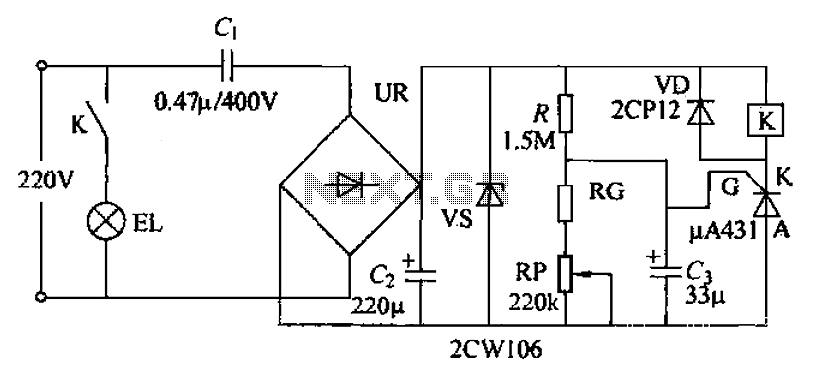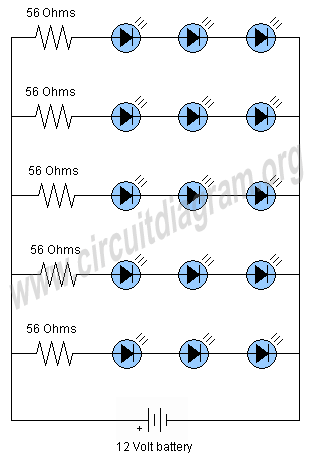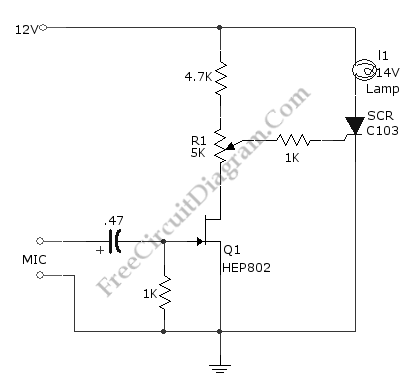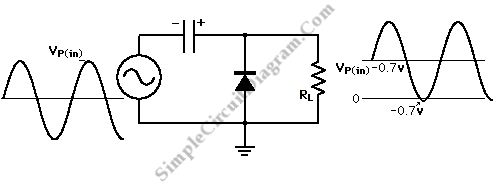
Sound-Activated Lamp (Relay Switch)

This simple circuit shown in the schematic diagram activates the switch using sound. This circuit can be used for various applications, such as automatic switching.
The circuit utilizes a sound sensor, which is typically a microphone or a piezoelectric sensor, to detect sound waves. Upon detecting a sound above a predetermined threshold, the sensor generates an output signal. This output signal is then used to trigger a transistor or a relay, which serves as the switch in the circuit.
In detail, the sound sensor is connected to an amplifier circuit to ensure that even low-level sounds can be detected. The amplified signal is then fed into a comparator circuit that compares the sensor output with a reference voltage. When the sound level exceeds the reference, the comparator output goes high, activating the transistor or relay.
The transistor acts as a low-side switch, controlling the power to a load, which could be a light, motor, or any other electronic device. If a relay is used, the sound detection can control larger loads that require higher voltage or current than the transistor can handle.
Power supply considerations are also essential; typically, a battery or a regulated power supply is used to ensure consistent operation. Additionally, capacitors may be included in the circuit to filter noise and stabilize the voltage levels.
This sound-activated switch circuit is versatile and can be adapted for various applications, including automatic light control, sound-activated alarms, or even as a trigger for more complex systems in robotics or home automation.This simple circuit shown int the schematic diagram actives the switch using sound. We can use this circuit for various applications, such as automatic (s.. 🔗 External reference
The circuit utilizes a sound sensor, which is typically a microphone or a piezoelectric sensor, to detect sound waves. Upon detecting a sound above a predetermined threshold, the sensor generates an output signal. This output signal is then used to trigger a transistor or a relay, which serves as the switch in the circuit.
In detail, the sound sensor is connected to an amplifier circuit to ensure that even low-level sounds can be detected. The amplified signal is then fed into a comparator circuit that compares the sensor output with a reference voltage. When the sound level exceeds the reference, the comparator output goes high, activating the transistor or relay.
The transistor acts as a low-side switch, controlling the power to a load, which could be a light, motor, or any other electronic device. If a relay is used, the sound detection can control larger loads that require higher voltage or current than the transistor can handle.
Power supply considerations are also essential; typically, a battery or a regulated power supply is used to ensure consistent operation. Additionally, capacitors may be included in the circuit to filter noise and stabilize the voltage levels.
This sound-activated switch circuit is versatile and can be adapted for various applications, including automatic light control, sound-activated alarms, or even as a trigger for more complex systems in robotics or home automation.This simple circuit shown int the schematic diagram actives the switch using sound. We can use this circuit for various applications, such as automatic (s.. 🔗 External reference
Warning: include(partials/cookie-banner.php): Failed to open stream: Permission denied in /var/www/html/nextgr/view-circuit.php on line 713
Warning: include(): Failed opening 'partials/cookie-banner.php' for inclusion (include_path='.:/usr/share/php') in /var/www/html/nextgr/view-circuit.php on line 713





